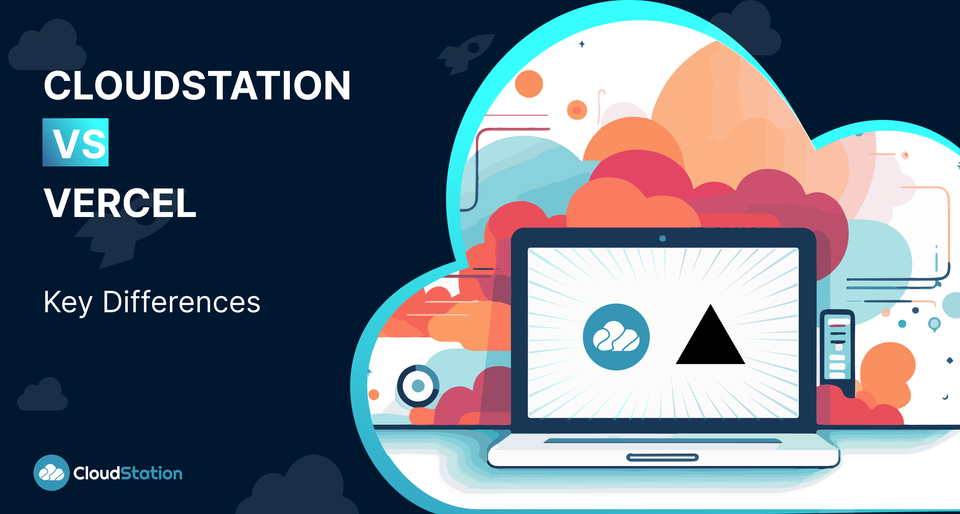CloudStation vs Vercel

Learn the key differences between CloudStation and Vercel in this detailed comparison. Whether you're building full-stack applications or modern static sites, find out which platform suits your project best.
Choosing between CloudStation and Vercel for your next project? Explore the unique offerings of each platform to simplify your decision!
For developers toggling between CloudStation and Vercel, it's crucial to understand each platform's unique functionalities. CloudStation is renowned for its robust full-stack deployment capabilities, supporting everything from frontend to databases and microservices. Conversely, Vercel is celebrated for its prowess in frontend projects, particularly in static sites and JAMstack applications, making it a favorite for rapid development cycles and performance optimization.
Key Differences
Deployment Focus
- CloudStation: Ideal for developers needing a comprehensive solution for both frontend and backend development, complete with integrated database support and scalable microservices.
- Vercel: Best suited for frontend developers looking for quick deployment and serverless architecture, especially effective for static sites and JAMstack applications.
Database Support
- CloudStation: Offers integrated solutions with PostgreSQL, MySQL, Redis, and MongoDB, facilitating easier management and scalability.
- Vercel: Focuses on flexibility by supporting external database integrations, promoting a decoupled architecture.
Microservices Architecture
- CloudStation: Provides extensive support for Docker and monorepos, enhancing development flexibility and microservice deployment.
- Vercel: While offering some support for Docker, it primarily enhances its platform with serverless functions, streamlining the deployment process.
Persistent Storage
- CloudStation: Includes options for persistent storage, catering to applications that require durable stateful interactions.
- Vercel: Maintains a stateless architecture, fitting for projects where external management of persistent storage is preferred.
Pricing Structure
- CloudStation: Utilizes a usage-based pricing model & subscription tier, offering scalability that adjusts to your project's needs.
- Vercel: Features a tier-based pricing model with a generous free tier, making it accessible for projects at various scales.
FAQs
- Which platform for web application is more user-friendly for beginners?
Both platforms are designed with usability in mind. - Can CloudStation handle high-traffic for web applications?
Yes, CloudStation is well-equipped to manage high-traffic scenarios with robust scalability options. - What are the cost implications of choosing Vercel over CloudStation?
If you need to build fast and ship even faster! Choose Cloud-Station.io - How does the deployment speed compare between the two platforms?
CloudStation typically offers faster deployment times, especially valuable for projects requiring frequent updates. - Which platform offers better support for real-time applications?
CloudStation provides excellent support for real-time applications, leveraging its edge functions and serverless architecture.
